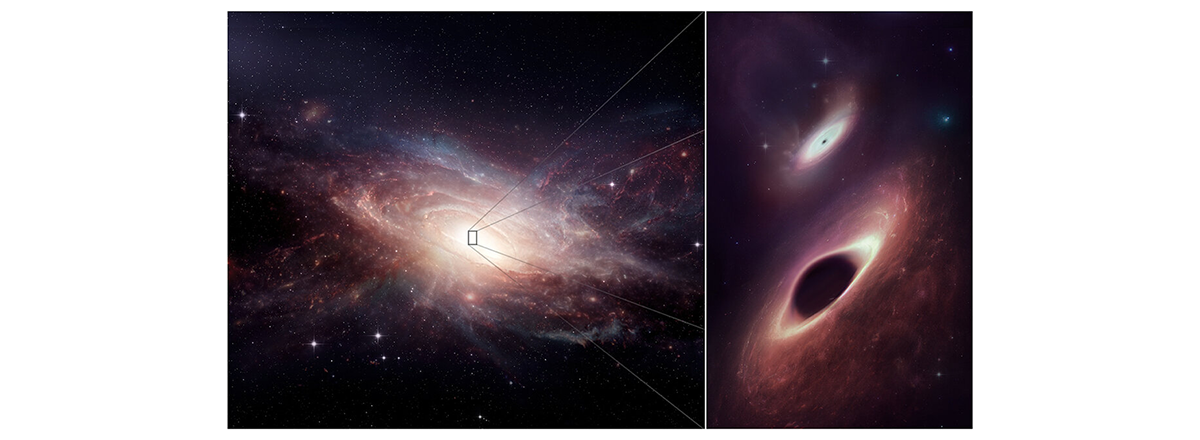Scientists Discover Two Supermassive Black Holes in Merging Galaxies
It will take several hundred million years for this particular pair of black holes to collide, but the insight gained from this observation could help scientists better estimate how many pairs of black holes in the universe are close to colliding.

While studying a nearby pair of merging galaxies using the Atacama Large Millimeter/submillimeter Array of telescopes (ALMA), scientists discovered a pair of supermassive black holes that will eventually become one.
The astronomers were observing two galaxies known as UGC 4211 merging about 500 million light-years from Earth. Near the center of the newly coalescing galaxy resulting from the merger, scientists found not one, but two supermassive black holes orbiting each other and growing side by side, the closest to a collision that astronomers have ever observed.
After the galaxies merged, the black holes came to a record 750 light-years closer together and continue to grow on absorbing the surrounding matter. One of the black holes is 200 million times the mass of our Sun, and the other is 125 million times the mass of our Sun.
Astronomers suggest that in the future, these two black holes will collide. It will take several hundred million years for this particular pair of black holes to collide, but the insight gained from this observation could help scientists better estimate how many pairs of black holes in the universe are close to colliding.
Moreover, a more detailed understanding of the final stages of galaxy mergers can provide more insight into what will happen when our Milky Way galaxy collides with the Andromeda galaxy in about 4.5 billion years.

